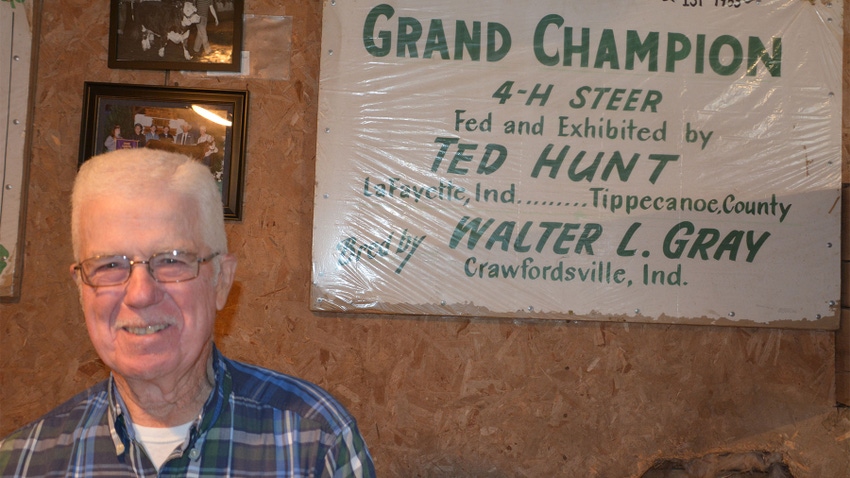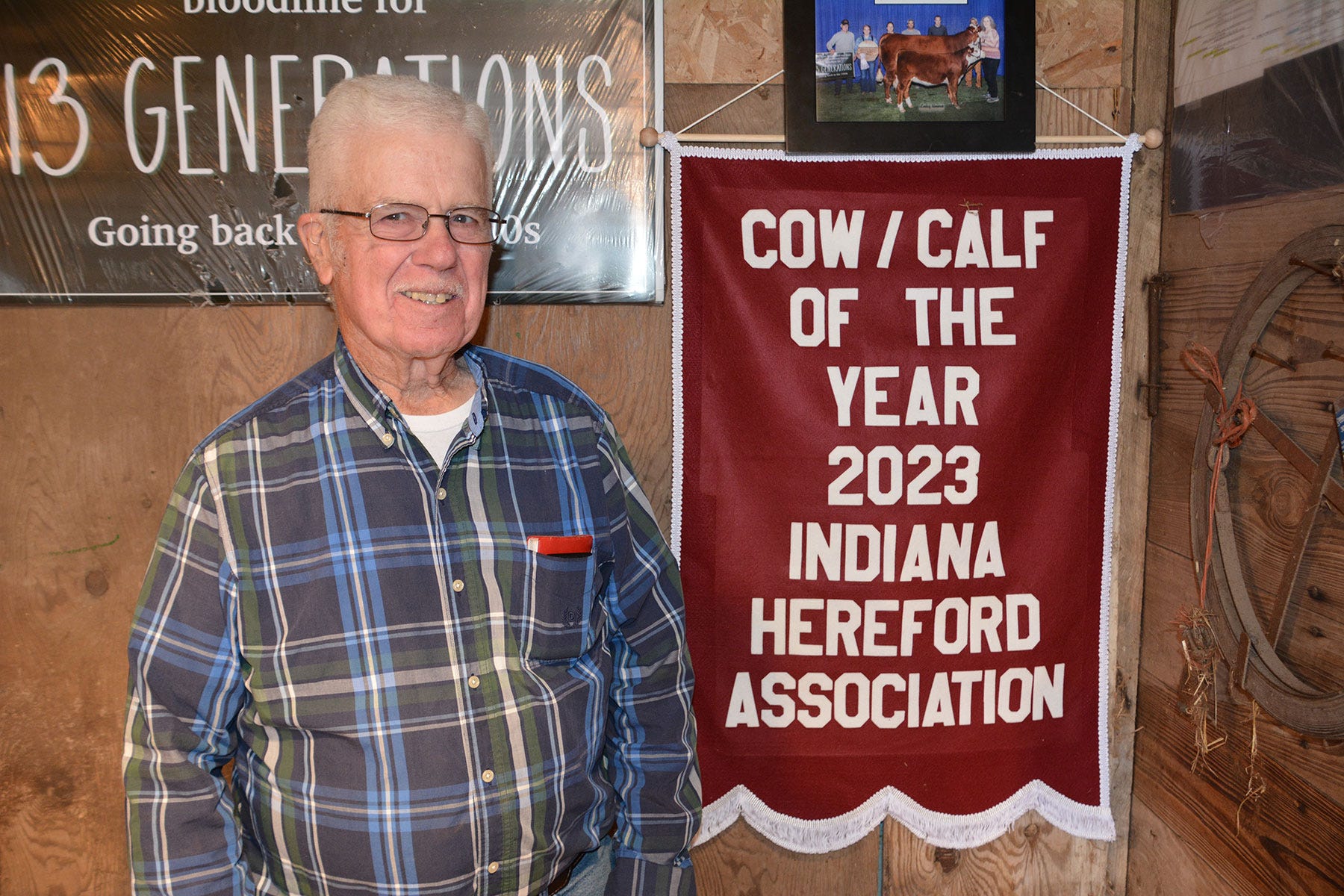
If the name Hunt sounds familiar but you don’t raise cattle, you still might not be dreaming. Did someone in your family attend Purdue University anytime from the 1930s through the 1970s? If so, their chemistry teacher just might have been Professor Herschel “Doc” Hunt.
This story isn’t about the legendary professor, although he contributed to it. Doc Hunt helped his sons, Ted and Bud, acquire beef cattle and exhibit them in 4-H shows in Tippecanoe County and at the Indiana State Fair. This story is about Ted.
Finding a paying job
“Dad didn’t share a lot about what he did in chemistry,” Ted explains. “I learned more after he passed in 1983.”
Ted knew his dad, born in 1906, grew up on a farm in Gibson County, Ind. He graduated from Oakland College and, with no money to be made in farming, headed to Indiana University to study chemistry. He did more than earn degrees, meeting his future wife, Isabelle, with whom he eloped. He spent a year teaching at the Massachusetts Institute of Technology before being hired to teach chemistry at Purdue in 1930.
“I got the impression he went to Purdue because he needed a paying job,” Ted says. “He earned ‘best teacher award’ in 1942, and just recently, we learned about his A-bomb medallion and certificate from the government for his work on the Manhattan Project for the U.S. government during World War II. Exactly what he did, we don’t know.”
Timely detour
Enamored with livestock, Ted graduated from Purdue in animal sciences and worked for cattle producers — first for Clodfelter’s Polled Shorthorns in Greencastle, Ind.; then for Patterson Land Co. in Wing, N.D.; and later for Adams Brothers in Iowa.
“At Patterson, they let me take five bulls to the Denver show in 1961 by myself,” Ted recalls. “That meant driving a truck with stock racks — no trailers and no interstates. On a free day, I drove up Pike’s Peak — in an old stock truck! Later, with those five head on board, the brakes went out. I made it home, but what a trip!”
Time spent working with cattle whetted Ted’s appetite, and he and his brother, Bud, would later build Hunt Bros. Herefords. But first, Ted needed a job. He went home to Indiana.
“I was trained to teach,” he explains. “Schools were consolidating, but I tried to stay one step ahead of school closings. I started at Green Hill, a school with eight grades and four teachers, making $3,750 per year.”
Teaching and family
Ted next taught at Pine Township, Elston and Klondike. By then, he had advanced degrees and was half-time teacher, half-time principal.
“Klondike was an important stop, because I met my wife, Julie,” he says, smiling. He spent 35 years as principal of Battle Ground Elementary School.
“People thought I would teach chemistry because Dad did, but I didn’t like chemistry,” Ted says. “If I asked Dad for help, he would just repeat the same answer, only louder. The third time, it was louder yet! I just didn’t get it.”
Ted and Julie understood how to help and support kids. They raised two children of their own, Tiffani Hunt Knowles and Travis Hunt.

PRIDE AND JOY: Ted Hunt exhibited this Indiana State Fair-winning steer. He tells visitors that the young woman in the photo was the state fair queen. Then, he pulls out his bride’s picture, same woman, and jokes she was his “queen.”
Early livestock days
Based on their success, it might seem like Ted and his brother, Bud, only learned how to show 4-H steers. Bud exhibited the reserve grand champion steer at the Indiana State Fair in 1947, and Ted followed with grand champion steer in 1953.
However, they learned about their industry, too. “Jack VanNatta was our neighbor, and he was president of the American Hereford Association, with a large show herd,” Ted says. “His ranch was just across the road. He was instrumental in getting my brother and I started in the Hereford business.”
While pursuing his teaching career, Ted, with Bud, developed a nationally recognized Hereford herd. They’ve exhibited cattle in 17 states, including showing the grand champion bull at the North American International Livestock Exposition in 1994. Cattle from their herd helped improve the breed across the country.

CURRENT SUCCESS: Ted Hunt received this honor at the 2023 Indiana State Fair. He tracked the pedigree of the cow back 13 generations in his own herd.
Still raising cattle
Today, the herd is down to 20 cows. The Hunts still show cattle, exhibiting at the Indiana State Fair in 2023. In fact, Ted was recognized for having the cow-calf pair of the year by the Indiana Hereford Association.
“That was special,” Ted says. “I traced that cow’s ancestry. She goes back 13 generations on our farm, all the way to the 1950s. It means a lot when you’re successful raising your own genetics for 70 years.”
Is Ted ready to hang it up? Just visit his website, huntbrosherefords.com. “I showed those bulls at Denver in 1961,” he says, grinning. “In 2011, thanks to Rusty Miller and Bruce Thomas, two of our bull calves showed there. That’s exhibiting every 50 years. I will look at the 2061 show as the date gets closer!”
About the Author(s)
You May Also Like




